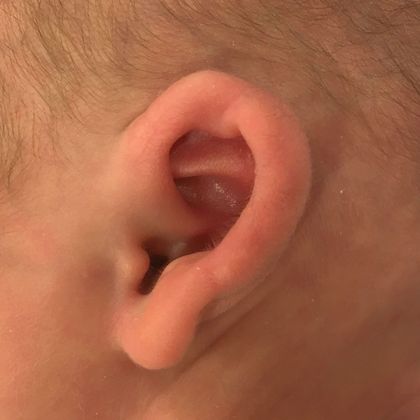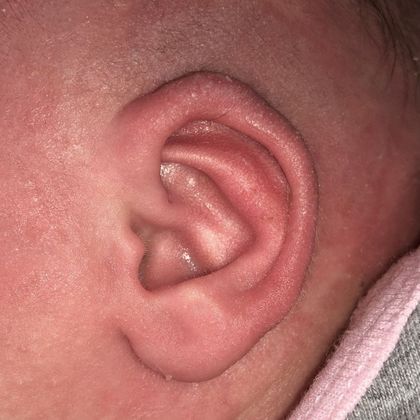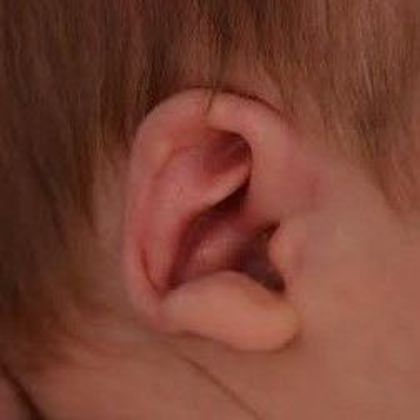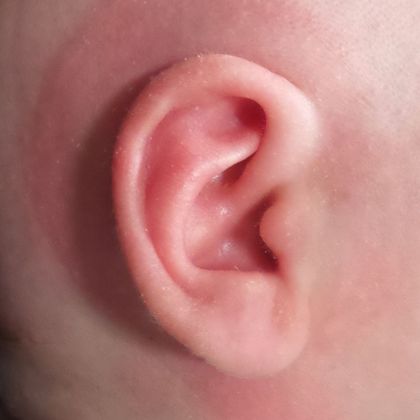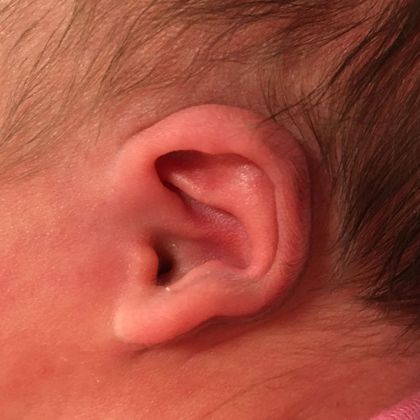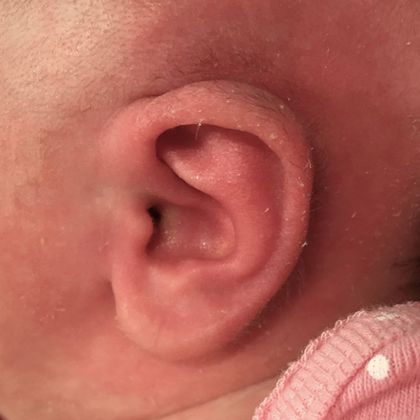Newborn earlobe deformities can occur by themselves or in conjunction with outer ear deformities. Earlobe deformities can look abnormal and also make it difficult to pierce baby’s ears. Parents seeking treatment for baby earlobe deformities no longer have to search, as Dr. Jandali can provide ear molding for corrective treatment or misshapen earlobes, earlobes that are pushed forward, and earlobes that are too high.
What Are Newborn Earlobe Deformities?
Earlobe deformities are a type of newborn ear condition that can occur with other deformities or by themselves. The earlobes are usually in an abnormal position. Baby earlobe deformities occur when the cartilage in the ear’s antitragus is deformed or mispositioned, pulling the earlobe upwards and causing it to point forward. This can be so severe that it blocks the entrance to the ear canal, making it difficult for a pediatrician to look into the ears and partially blocking sound waves from entering the ear.
The exact cause of newborn earlobe deformities is unknown, but they may occur because of genetics or forces in the uterus pushing the earlobes into the abnormal position. Newborns with earlobe deformities can experience frustration and embarrassment as they age.
Non-Surgical Correction in Babies with Abnormal Earlobe Position
While earlobe deformities don’t impact your baby’s hearing, treatment is often recommended for newborns who have not shown improvement of earlobe position during the first seven to 10 days of life. If your baby’s showing signs of earlobe deformities past their first week, then seeking early treatment is the key to correcting it.
If your infant has problems with their earlobes, ear molding can help reshape the earlobe back into its normal position and shape. Ear molding is a non-surgical treatment that reshapes the ears using molding devices. During your baby’s treatment, the device is placed on the earlobe area for at least four weeks, and over time the device reshapes the earlobe into a more normal position and shape.
Ear molding can quickly treat earlobe deformities and other newborn ear deformities by gradually reshaping the cartilage. It is considered one of the best ways to treat newborn earlobe deformities, as it offers these benefits:
- Responsive: Ear molding is recommended for newborns and infants because their cartilage is malleable during the first few weeks of their life. When babies are born, their bodies have higher estrogen levels from their mothers, making their cartilage soft and pliable for treatment.
- Painless: As their cartilage and skin can be molded easily, ear molding is a painless process for treating ear deformities. Babies don’t notice that the molds are in place and they completely ignore them during treatment. Ear molds are customized to the baby’s ear and don’t affect how the babies sleep, lay, or feed.
- Self-Correcting: The molding device can be adjusted and repeated as long as needed until your baby’s ear condition is corrected. Within a minimum of four weeks, your newborn’s ears gradually change over time, providing them with a natural and improved shape.
- Non-Surgical: As a non-surgical treatment option, parents can avoid future correctional surgery with its inherent risks and recovery. In addition, the result from ear molding usually provides a much more natural shape than a surgical result could obtain.
Because Dr. Jandali has helped countless infants with ear deformities, he provides valuable experience and comfort for ear molding treatments for families throughout the Connecticut.
Receive Newborn Earlobe Treatment with Ear Molding
Dr. Jandali offers non-surgical ear molding treatment for newborn earlobe deformities at his practice in Connecticut. For more information, contact Dr. Jandali’s office today to discuss your baby’s treatment options.
